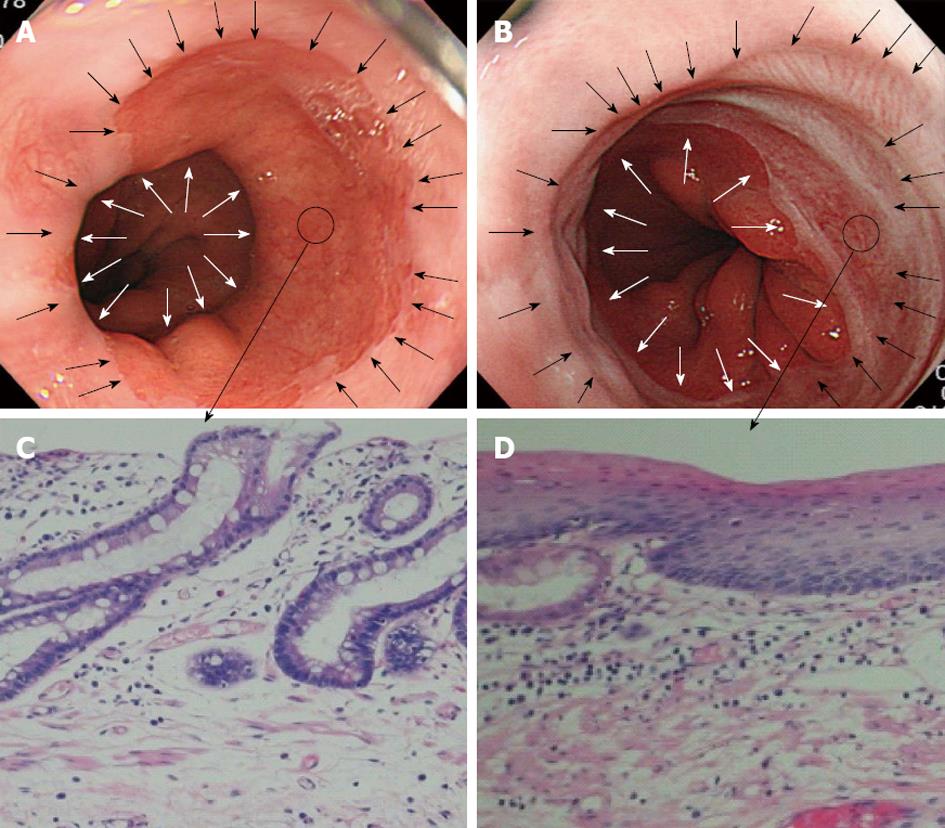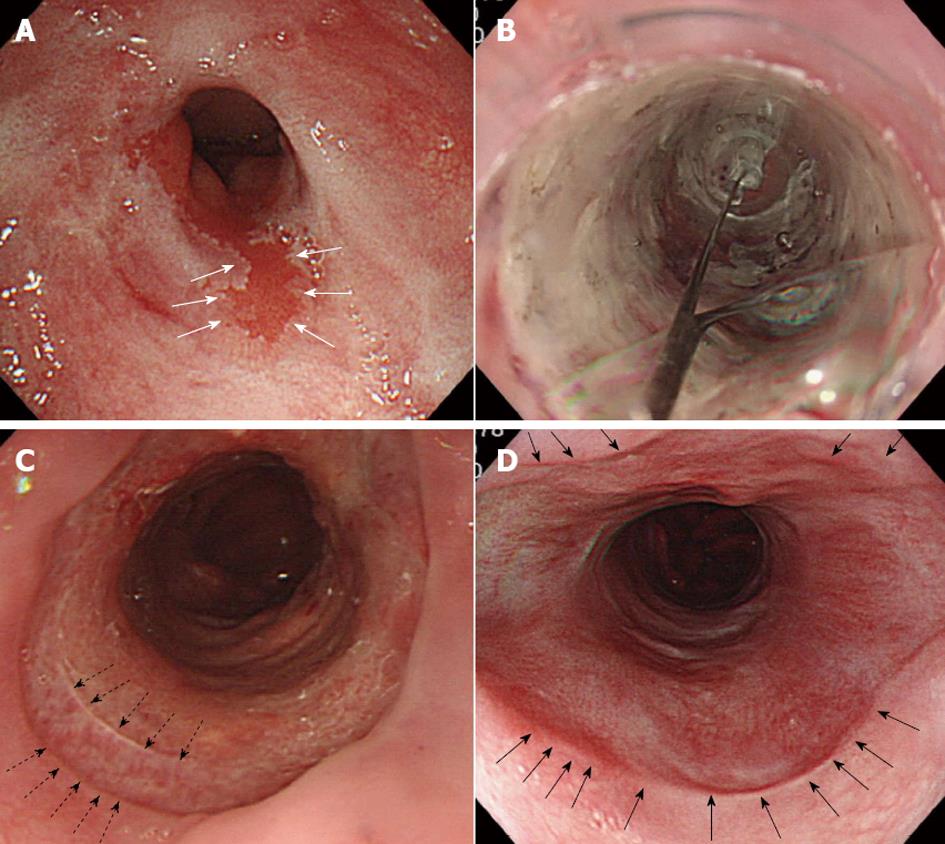Copyright
©2013 Baishideng Publishing Group Co.
World J Gastroenterol. Aug 21, 2013; 19(31): 5195-5198
Published online Aug 21, 2013. doi: 10.3748/wjg.v19.i31.5195
Published online Aug 21, 2013. doi: 10.3748/wjg.v19.i31.5195
Figure 1 Short segment Barrett’s esophagus undergoing endoscopic submucosal dissection.
A: Short segment Barrett’s esophagus (SSBE) predominantly of the right sidewall. The white arrows indicate the distal side, the black arrows indicate the proximal side, and the black encircled area indicates the preoperative biopsy site; B: After circumferential resection of SSBE with endoscopic submucosal dissection: regenerating squamous epithelium is seen between the distal side (white arrows) and the proximal side (black arrows). The black encircled area indicates the postoperative biopsy site; C: Specialized columnar epithelium with the preoperative intestinal metaplasia (hematoxylin and eosin stain, × 200); D: Postoperative regenerating squamous epithelium. Specialized columnar epithelium is not seen (hematoxylin and eosin stain, × 200).
Figure 2 Barrett’s adenocarcinoma with high-grade dysplasia and severe stenosis.
A: Barrett’s adenocarcinoma (white arrows) with high-grade dysplasia and severe stenosis of the lower esophagus; B: On days 5, 8, 12, 15 and 20 after endoscopic submucosal dissection, steroid application and balloon dilatation were performed to prevent stenosis; C: The base of the artificial ulcer on day 12 after surgery. Regenerating squamous epithelium can be seen from the resection margins of the proximal side indicated by the dotted arrows; D: On day 60, the base of the artificial ulcer is thoroughly covered with regenerating squamous epithelium (black arrows). No recurrence has been observed for 5 years.
- Citation: Mori H, Kobara H, Rafiq K, Nishiyama N, Fujihara S, Ayagi M, Yachida T, Kato K, Masaki T. Radical excision of Barrett's esophagus and complete recovery of normal squamous epithelium. World J Gastroenterol 2013; 19(31): 5195-5198
- URL: https://www.wjgnet.com/1007-9327/full/v19/i31/5195.htm
- DOI: https://dx.doi.org/10.3748/wjg.v19.i31.5195










